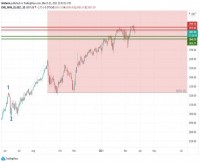|
Opalesque Industry Update - A report published by IndexUniverse found that US sourced alternative ETFs, based on hedge fund replication, long/short ETFs and other alternative strategies saw nine out of 49 ETFs or 18%, paying capital gains distributions, making them among the least efficient in terms of tax management. The survey explains that ETFs are designed to be tax efficient. The major part are index funds with low turnover which lends itself to greater tax efficiency than other mutual funds and the design of the ETF’s creation and redemption processes allows most ETFs to continually cleanse their portfolios of positions with embedded capital gains. The report found that only 84 of the 1,370 ETFs, some 6% of the whole universe, trading in the United States are paying capital gains distributions this year. The numbers include 202 exchange-traded notes. The survey found that the record for ETFs wasn’t perfect, however, and varied by asset category. Traditional equity ETFs, where just 19 of 756 ETFs paid distributions were among the most successful at managing their tax position. Fixed income, however, fared far worse. Thirty-seven of 156 fixed-income ETFs paid out distributions, or nearly 24% of all nonleveraged ETFs. The payouts were small—31 of 37 funds paid out gains totaling less than 1% of each of the fund’s net asset value. Nonetheless, the number of payouts was high. Leveraged and inverse ETFs also saw significant distributions, with 25 of 259 geared ETFs on the market paying out distributions, or 10%. Currency ETFs and Asset Allocation ETFs, however, were perfect, with zero payouts among a combined 51 funds. The payouts in bond funds gained particular attention this year. Of note, all the capital gains distributions reported by the three-biggest U.S. ETF sponsors—iShares, State Street Global Advisors and Vanguard Group—were in fixed-income ETFs. Bond funds face various challenges in terms of tax efficiency. For starters, unlike equity ETFs, some use a cash-based redemption mechanism, which generates more internal turnover and can lead the funds to generate capital gains. According to some experts, the bigger factor this year was market conditions. IndexUniverse’s data mining also found the divergent story lines from the two major U.S. purveyors of inverse and leveraged funds, ProShares and Direxion. On the one hand, ProShares didn’t report any capital gains distributions in 2011. That in itself is noteworthy, as any fund prospectus from either ProShares or Direxion clearly warns that the turnover required by daily-rebalanced portfolios should create a greater likelihood of capital gains distributions. The report says: “Direxion, however, had payouts in 25 of its 50 leveraged and inverse funds. One important variable may be that Direxion specializes in triple-exposure funds, while ProShares focuses on double-exposure funds. The triple-exposure component may make Direxion’s challenge a bit more significant. The Direxion distributions do include a number of bullish Treasury funds, which dovetails with what Dickson of Vanguard spoke about. But the capital distributions at Direxion also extend to a host of equity investments, including a bull and bear pair of ETFs focused on gold mining companies, which is more of a mystery. In any case, a Direxion official who spoke to IndexUniverse on condition of anonymity stressed that it’s always the company’s aim to minimize such distributions”. Beverly Chandler |
Industry Updates
Survey finds alternative ETFs among least efficient at managing tax position
Tuesday, January 03, 2012
|
|





 RSS
RSS







